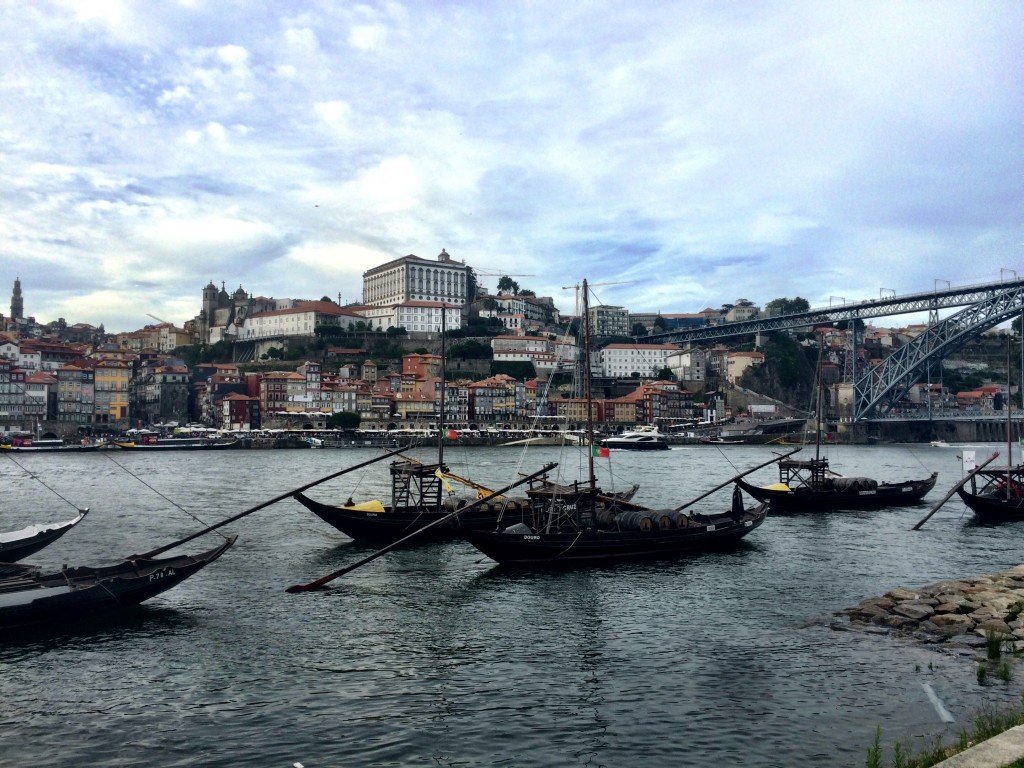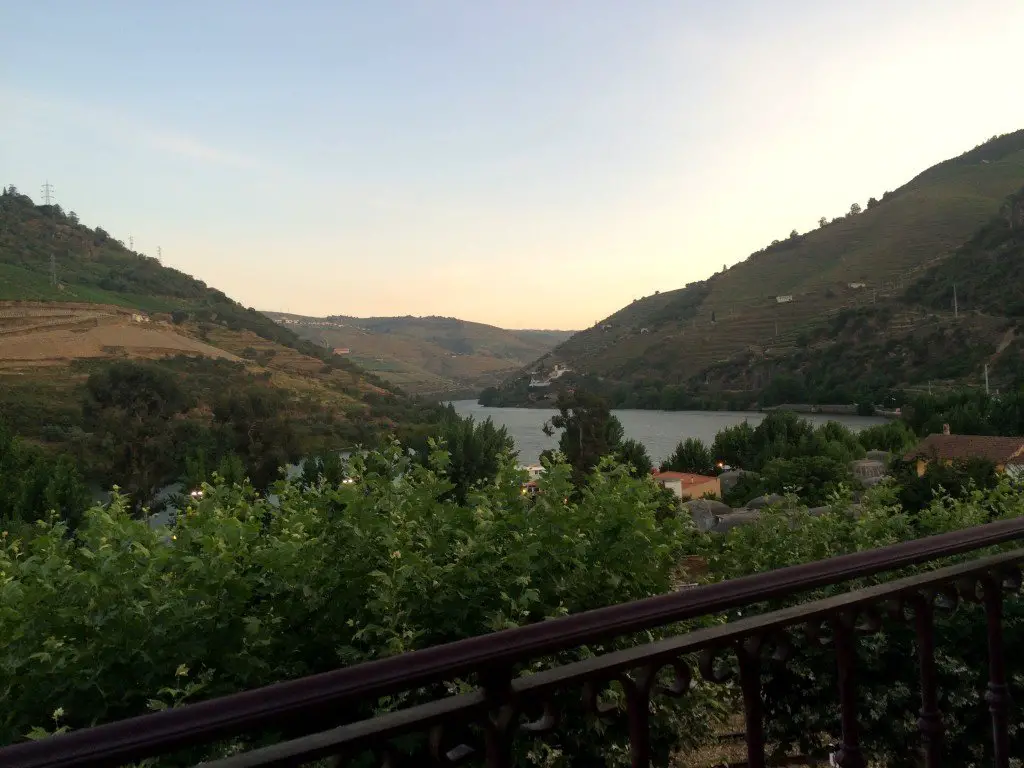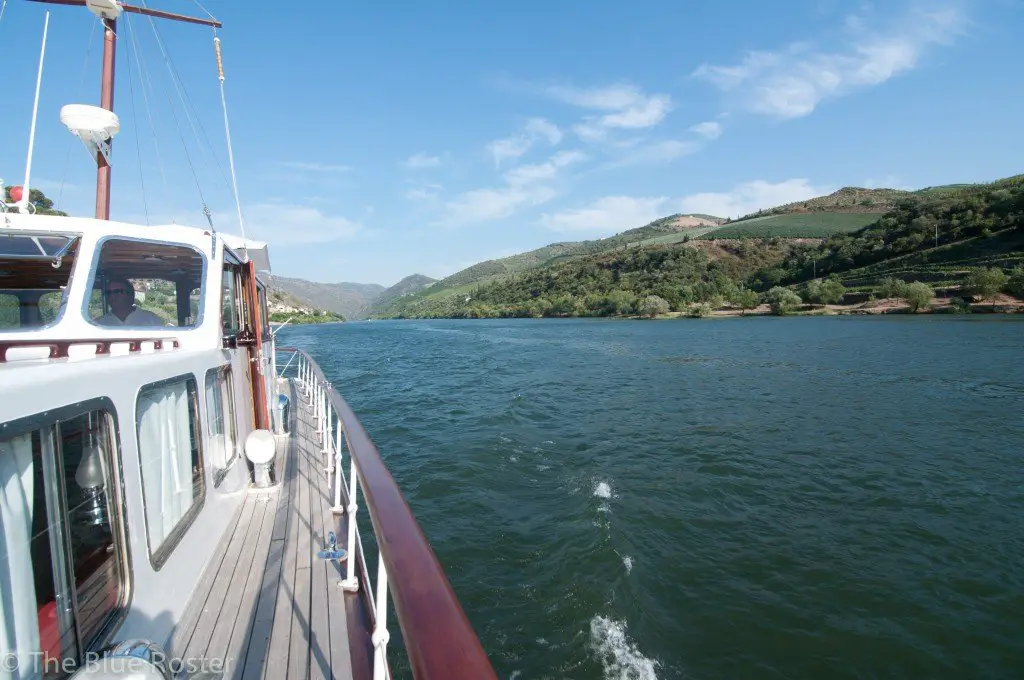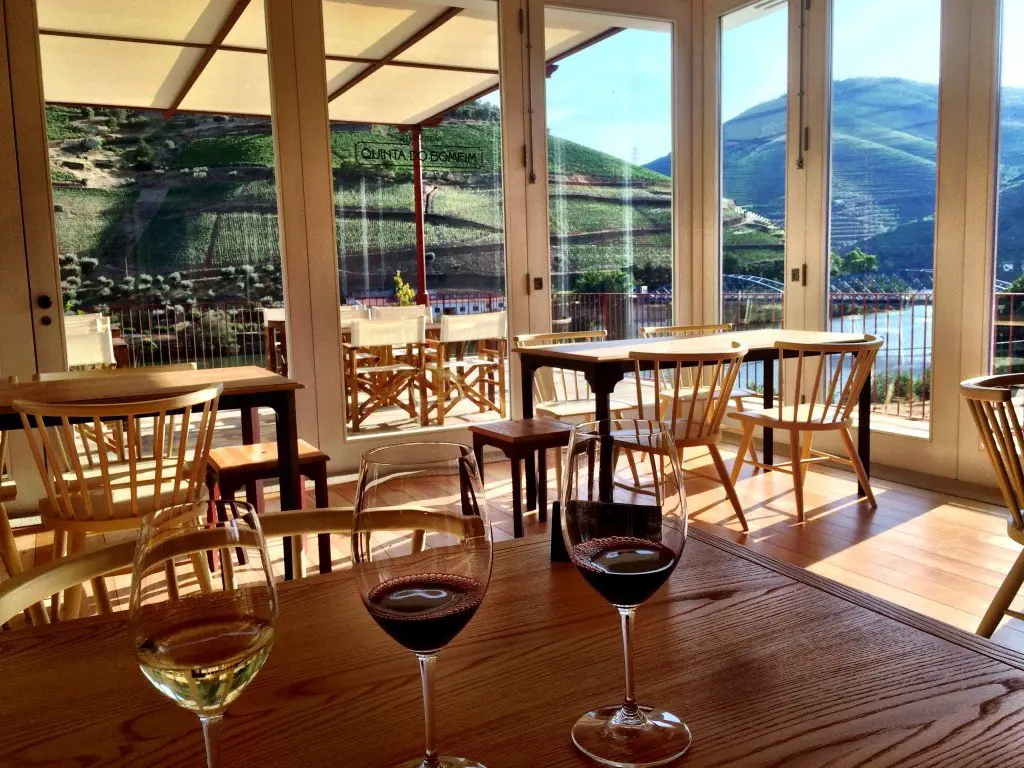Douro Wine: The Unknown Red From A Known Location
Reading Time: [est_time] We rode the rail line along the Atlantic Ocean. The train hugged the bank of the river as it twisted and turned, hanging on to the track and inching deep into a steep

Reading Time: 4 minutes
We rode the rail line along the Atlantic Ocean. The train hugged the bank of the river as it twisted and turned, hanging on to the track and inching deep into a steep gorge. Finally, we arrived at the Douro Valley, tucked away in a corner of Western Europe—a place where mountains shot up from the river bank and reached heights of over a thousand meters, a beautiful place renowned for a few reasons to the world while at the same time remained obscure to many people.
Douro Valley in Portugal is a UNESCO World Heritage site and owns one of the world’s oldest wine denominations.
In the 1800’s, boatloads of barrels containing Port wine constantly moved from the grape-growing places in the valley downstream to the town of Porto for bottling. After that, the finished products were shipped abroad. Since the wine came out of the city of Porto, it was conveniently named Port wine. To help the volatile wine endure the long journey across the ocean, British merchants would add fortified alcohol to preserve the wine before it was transported to London. Winston Churchill loved Port wine (which tipple didn’t he love anyway) which only added to its prestige. His devotion towards Port remains documented in the Graham’s wine house in Porto, where a handwritten invoice for a large order to Churchill was framed and hung prominently for the humor of all visitors.
For a long time, Portugal was strictly a port wine territory, struggling to break away from its age-old reputation. But a glance at Wine Spectator’s Top 100 Wines of 2014 shows a telling trend. To my surprise, numbers one, three, and four on the list are Douro wines. I and many of my wine-drinking friends had no idea that this region was producing topnotch wine and that ignorance could largely be attributed to one observation: besides Port, selection of Portuguese wine abroad often leaves a lot to be desired. Case in point, the first time I had a Douro dry red wine was not in Portugal, but a fine wine shop in Singapore; the large selection in the shop included wines from France, Italy, Spain along with all the usual new-world, wine-producing countries, yet there were only two bottles of Portuguese dry wine.
Upon arrival in Portugal, we had no idea what our itinerary would be. One thing that Charine and I love to do when arriving in a wine-producing area is head straight to the wine bars. In both the cities of Lisbon and Porto, all the staff at the wine bars we visited spoke with much passion about their homeland’s wine. The other common theme I observed during the constant imbibing was that the quality of the dry reds from Douro, even the table wine, were ranging from good to spectacular. Being on a “wine pilgrimage”, it just made sense for us to take the train into the heart of the Douro river valley, the source of the vineyards.
What a ride it was. The vines hang on to the steep mountains for dear life, stretching for the burning heat from the sun. When we left Porto, it was 20 degrees Celsius; a few hours down the river as we approached the middle of the Douro grape-growing region, the temperature had rose to a dry and unforgiving 36 degrees Celsius (97 F). The drastic shift in temperature—as explained during a cellar tour—was due to a tall mountain range running perpendicular to the river and blocking the cool air of the Atlantic Ocean from reaching into the valley.

Sunset offers the Douro River and its surrounding steep vineyards a relief from the intense summer heat.
We arrived at the riverfront of Pinhao town, a bare quay with a one-lane town center which showed no resemblance of a wine destination. The main street had only two hotels, situated next to each other, their proprietors stood outside hawking for business. We checked out the first hotel and walked towards the second in hope for a better deal. The owner of the second hotel gave us a “no-no” shake of his head. His right fist raised, his thumb and index finger rubbing and gesturing that his competitor was all about the money. We laughed in agreement as we approached him, appreciating his open contempt. We chose to spend the night at his place, our decision based entirely on that first impression.
Pinhao had one small wine shop on the dusty lane and a few provision shops that never seemed to be open. Our morning routine consisted of rounds of coffee and playing scratch lotto tickets with the locals, a far cry from our early morning tasting sessions in Italy. Information on the wine houses, known as “quintas” in Portugal, was non-existent and it was hard to make any progress with our zilch knowledge of the Portuguese language. Our hotel owner had a decent selection size of Douro wines (dry red) but because of the language barrier, we couldn’t get much information out of him; when scanning his selection he could only tell me, “This good, this good, this… super good!”
The weather was discouraging but not enough to stop us from walking all around the town in search of some great wine. We managed to find a few and the more Portuguese dry red we tasted, the more we appreciated them. The consistency and quality were amazing, all across from the cheapest bottles all the way up to top-flight stuff. Many of the winemakers retailed their entry-level wine at under three Euros a bottle which was very good value for money.
Douro Wine
The grapes in Douro have names that challenge the memory, most of which I had never heard of before this trip. The native varieties include Touriga Nacional, Touriga Franca, Tinta Barroca, Tinta Cao and Tinto Roriz (which is the same grape known as Tempranillo in Spain) to name a few. These are the same grapes used for Port wine. The intense summer heat, little rain, and cool temperature at night lead to very little fruit on each vine (low yields) and small grapes with high concentration of sugar. During a visit to a winery, we were shown a video that stated that because of those factors, the Douro grapes are the most expensive grapes in the world.
The Portuguese wine are dark and inky in color, with concentrated dark fruit flavors, but far from fruit bombs in the mouth—think Californian red concentration with French wine finishing. The wines have complexity and depth which likely come from the blending. Charine’s favorite bottle is a blend of over 40 different grapes! The wines are outstanding, without the hefty price tag that comes with from premier winemaking regions. The best part is the wines were soft enough to drink by themselves but powerful enough to eat with red meats, which makes Douro red a rare bird in the world of wine.
It is always exciting to try great new wine. What is better than trying is the journey of discovery. The beauty about wine is its study of so many things: the geography, the agriculture, the history, the people, their culture, their food and the art of putting everything together. The marvelous part of drinking Portuguese reds particularly from the Douro is discovering the history of the place and how the winemakers are now reinventing themselves, and as a result challenging the conventional belief of winemaking and of Portugal’s viniculture. The stunning topography of the region doesn’t hurt matters either. Finding and drinking new wines is often like travel, the journey is just as enjoyable as the destination.
Related
Disclaimer: The ideas expressed in this article are personal opinions and are not associated with any sponsors or business promotions.



